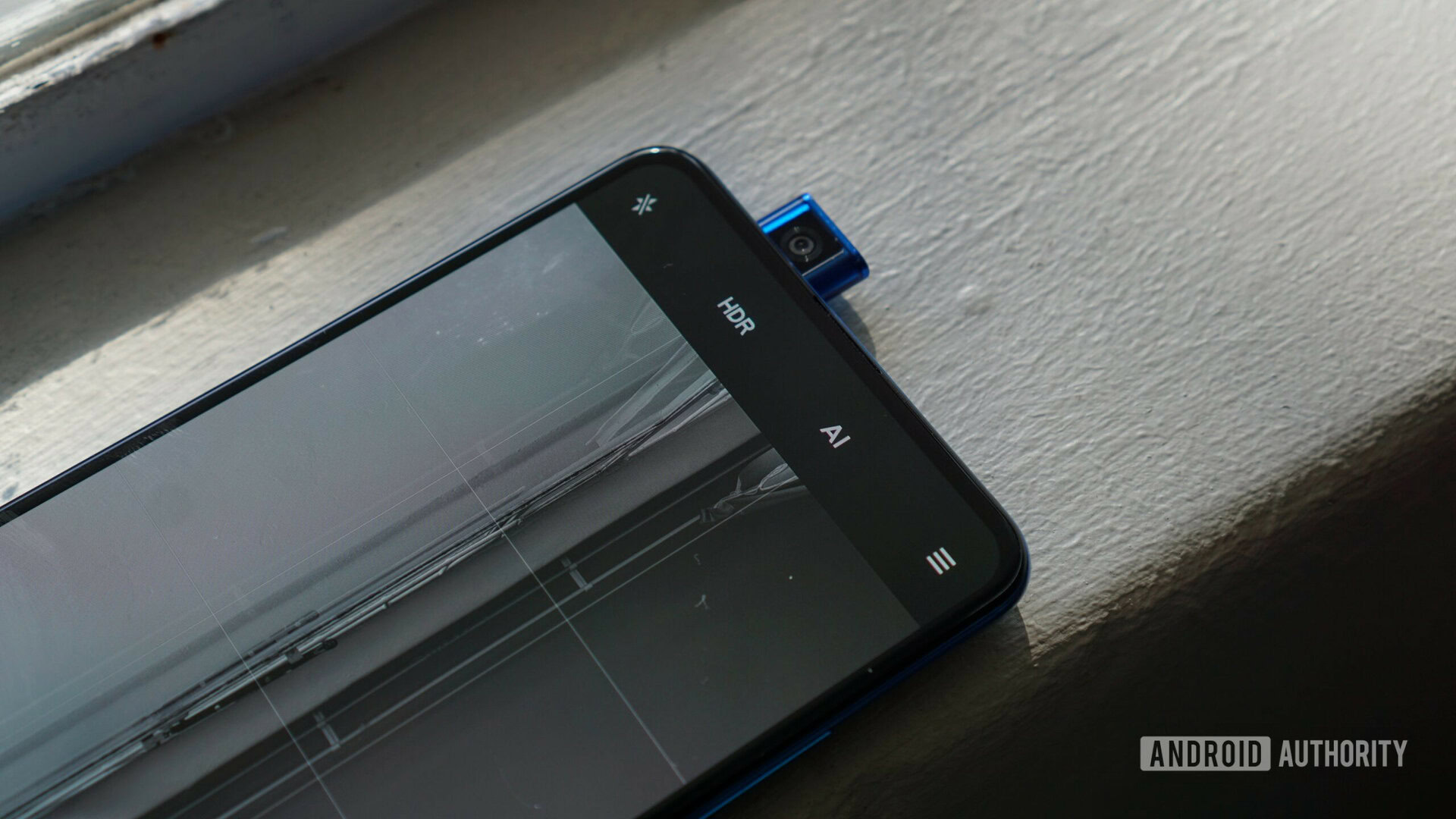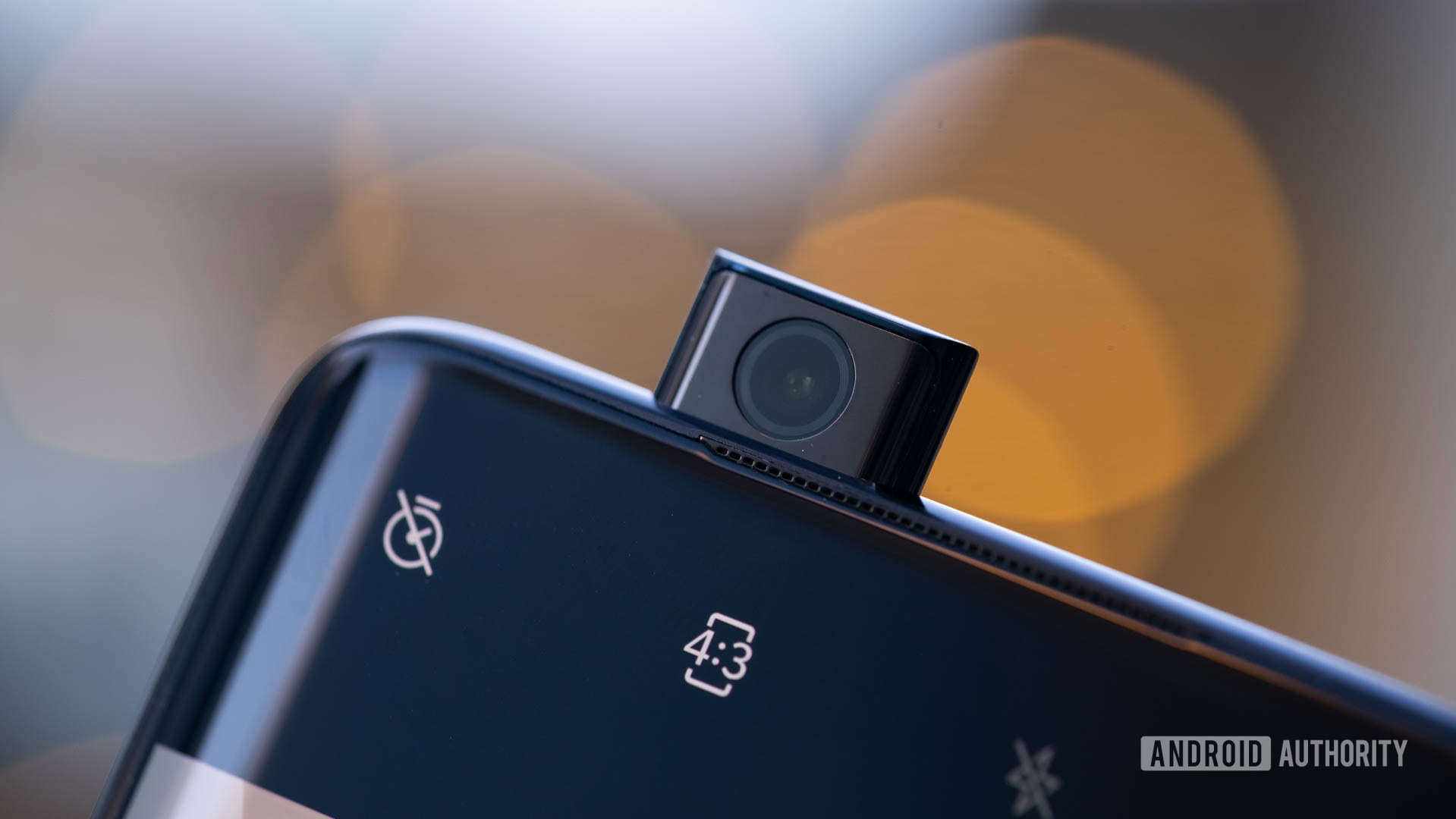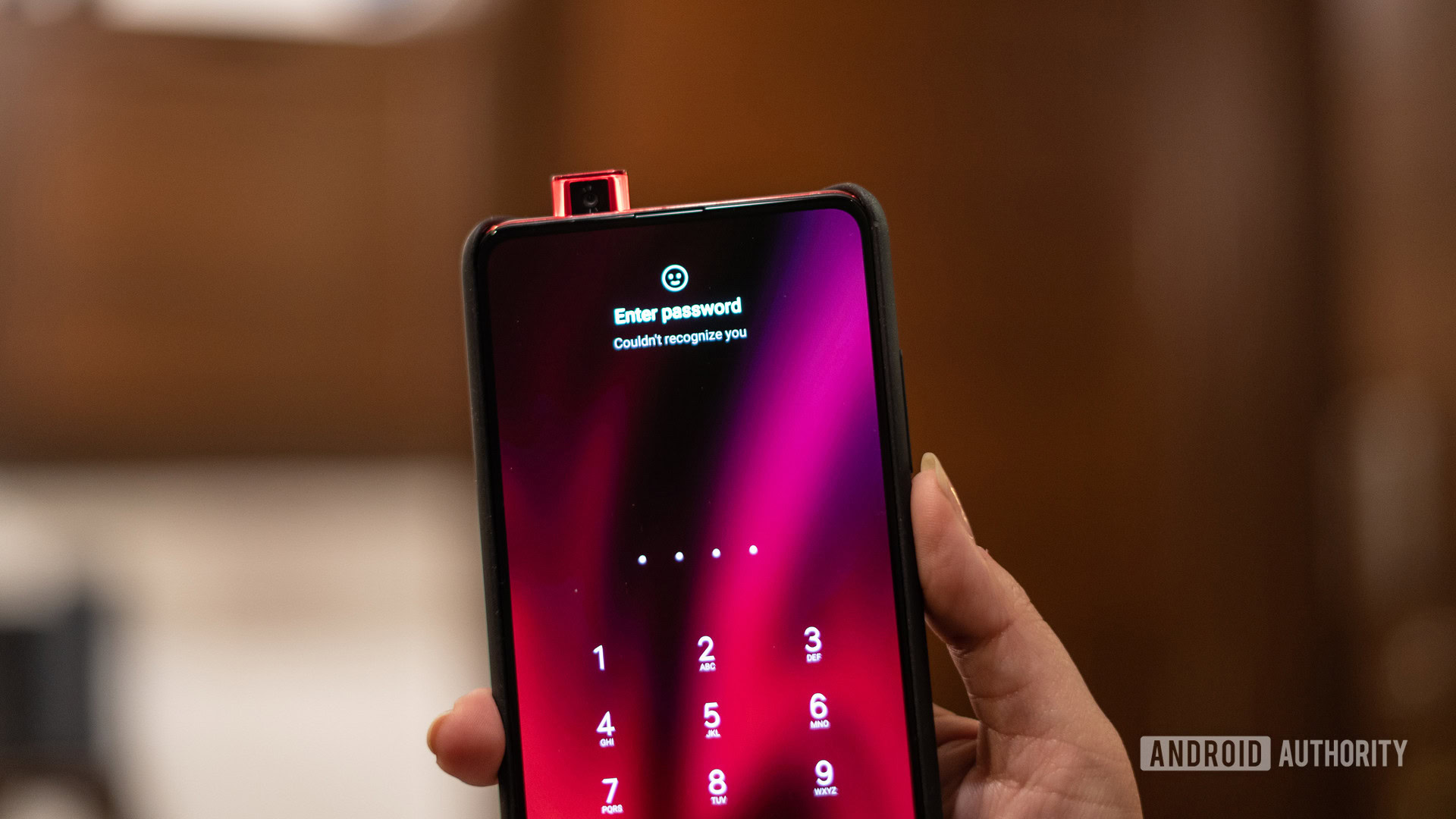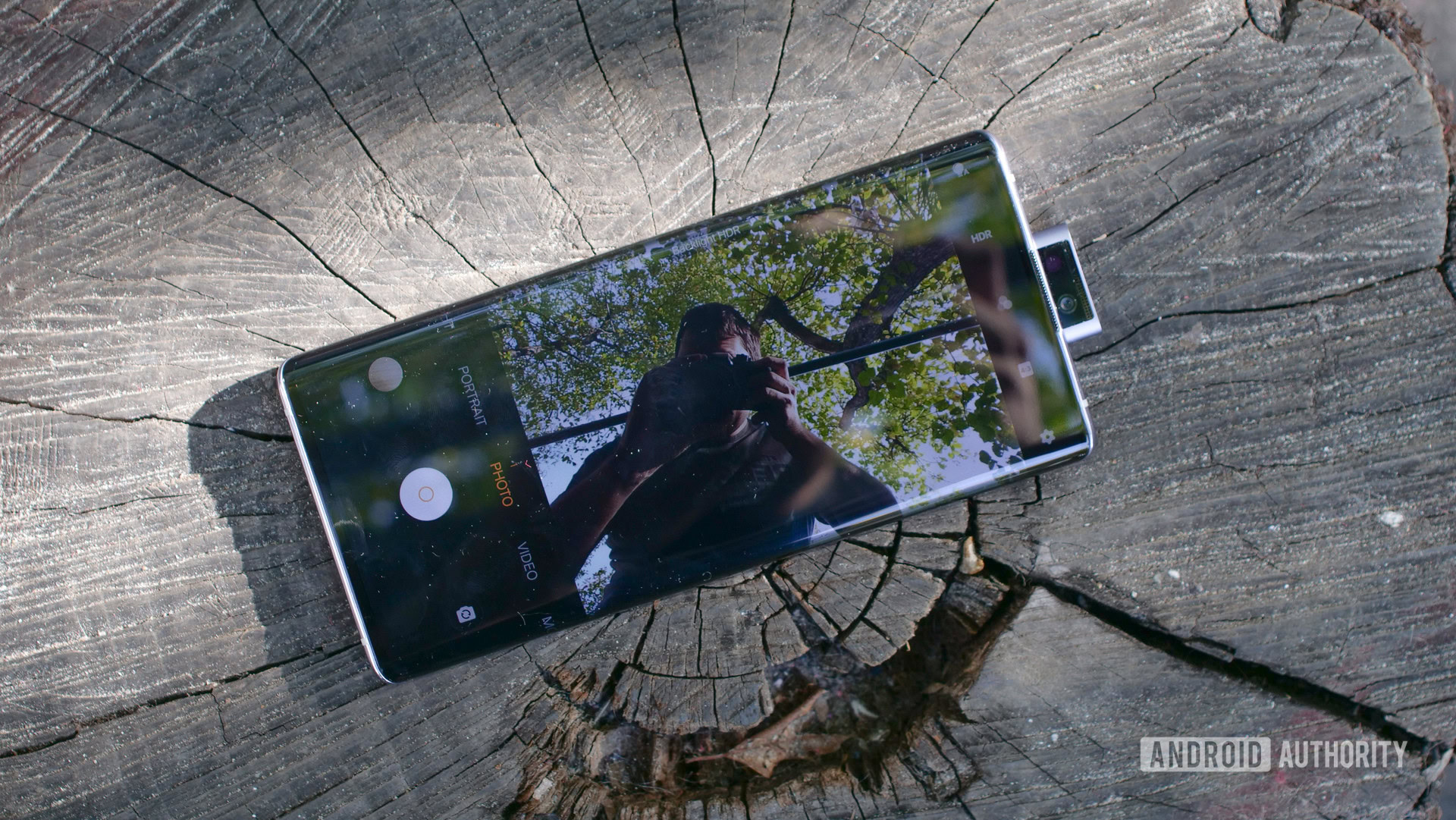Affiliate links on Android Authority may earn us a commission. Learn more.
I really miss phones with pop-up selfie cameras
April 9, 2023

I love to dig through my cupboard to use old phones now and again, and I recently rediscovered the Xiaomi Mi 9T Pro (also known as the Redmi K20 Pro). This ~$500 phone arguably set the standard for affordable flagships in some markets back in 2019, but the most notable thing about it was the fact that it packed a pop-up selfie camera. And simply using the Xiaomi phone again made me realize how much I miss this feature on modern smartphones.
Sure, we’ve got phones with under-display selfie cameras today, but as cool as this modern solution is, I still miss the previous concealed camera option. Pop-up sensor tech still feels as futuristic and fun to me as it did when I saw the first phone with it back in 2018. There is something really cool about seeing the selfie camera extend and retract from the phone’s body like a periscope.
Why I miss pop-up cameras

I mainly loved how unique a pop-up camera was from a design point of view. But there were still a couple of other reasons why I liked this approach to concealed sensors.
For starters, pop-up cameras enable an uninterrupted full-screen display much like under-display sensors. In fact, I’d argue that the pop-up approach is better for screen quality as you don’t have any haziness on the display area above the under-display camera.
Punch-hole cutouts and under-display cameras wish they could be as cool as pop-up cameras.
Another reason why I love this design is that it was also ideal for privacy-conscious users, with the camera getting stowed away when not in use. That meant hackers and other nefarious parties didn’t have free rein to capture you. There were even several cases at the time of pop-up cameras randomly popping up while browsing the web or using apps on the device, thus alerting users to a privacy invasion.
Google has since added a handy camera indicator to Android, alerting users when an app is accessing their front-facing snapper. But pop-up selfie cameras still made for a neat layer of privacy in this regard, akin to a webcam’s physical privacy shutter.
Some brands also tried to add their own flair to pop-up selfie camera phones. For example, this Xiaomi phone has customizable LED lights on the module, custom screen animations, and your choice of sounds to play when the camera pops up and down. Xiaomi’s pop-up toting phones also have LED lights at the top of the selfie camera module, acting as color-coded notification lights. And yes, I absolutely miss notification lights on phones too.
Reliability concerns? What are those?

“It’s another mechanical, moving part. That means it will fail,” seemed to be a constant refrain from some enthusiasts when the first pop-up cameras were announced.
Yet here I am, still waiting to hear mass reports of owners who suffered premature pop-up camera failures. I haven’t used the Mi 9T Pro consistently over the years so my phone isn’t the best example of reliability. But the pop-up camera here nevertheless still works just fine, retracting under pressure as you’d expect but still functioning perfectly thereafter. The module still retracts very quickly when I’ve dropped the phone too.
It seems like concerns over the reliability of pop-up cameras may have been overstated.
My colleague Rita El Khoury reported that her spouse used a OnePlus 7 Pro for two years without problems; the phone has since been used by a relative for a year now without any selfie camera issues. Meanwhile, my other colleague Dhruv Bhutani noted that his old OnePlus 7 Pro pop-up camera still works fine as well after more than one and a half years of usage. Finally, another colleague C Scott Brown added his voice to the mix, noting that he used the OnePlus 7 Pro for over two years without any issues.
Another oft-touted line is that it’s tough to make a water-resistant phone with a pop-up selfie camera. In fact, I thought this was the case for ages too. Then Samsung brought water resistance to the Galaxy Z Flip and Galaxy Z Fold series, packing IPX8 ratings across the board. So if a company can bring water resistance to a more complex foldable form factor, why not a phone with a pop-up camera? It’s also worth noting that the OnePlus 7 Pro had some protection against water damage, although it didn’t have an official IP rating due to cost-related reasons.
Do you miss phones with pop-up selfie cameras?
Those who worry about image quality with these cameras shouldn’t fret, either. My Mi 9T Pro takes disappointing selfies, but that’s due to the Xiaomi software more than anything else. We still thought that the likes of the OnePlus 7 Pro and vivo Nex 3 delivered great selfie image quality via their pop-up shooters. In fact, I’d say that a contemporary pop-up camera would take higher-quality selfies than a phone with an under-display selfie camera. After all, these newer hidden sensors have to deal with glare and other issues caused by having to peer through a smartphone display.

I should also note that pop-up cameras weren’t the exclusive domain of premium phones either, as there were a handful of budget-tier phones with the tech too. In fact, I distinctly remember seeing a mid-range HUAWEI Y9 Prime 2019 used by an elderly woman at my dentist’s office a few years ago. I don’t think mid-range phones with an under-display selfie camera are even a thing today, roughly three years after the tech debuted.
No matter how you look at it, pop-up cameras were one of the more eye-catching design innovations in recent years. Sure, the industry may have quickly moved on to punch-hole cutouts and under-display cameras, but I don’t get quietly excited about taking a selfie with the ZTE Axon 40 Ultra‘s under-display camera in the same way that I get when using the Mi 9T Pro’s pop-up lens. So here’s hoping we see pop-up cameras making a comeback of some kind.